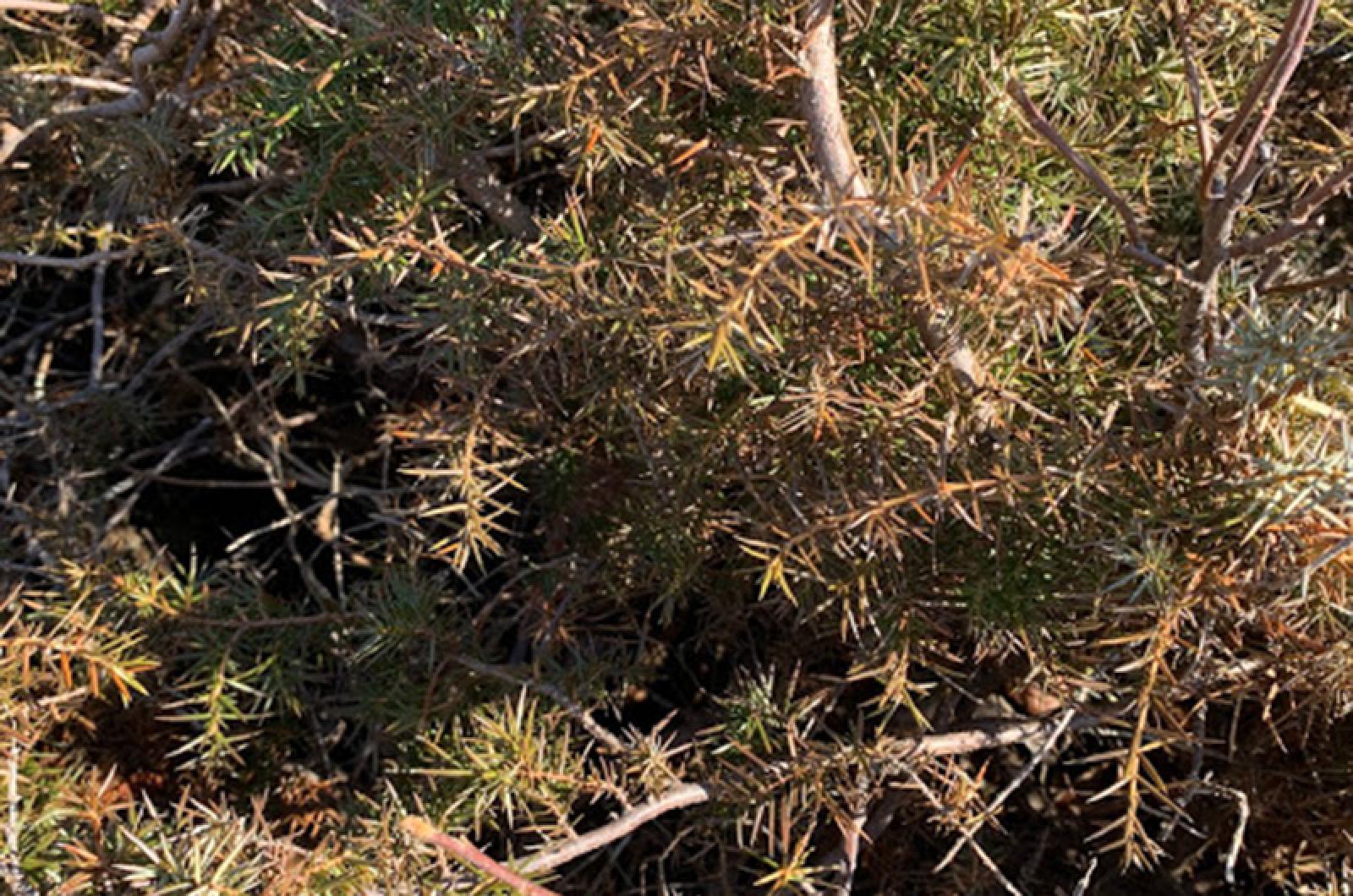Common juniper is anything but common on the Vineyard.
Though it is ubiquitous elsewhere, you would be challenged to locate it here. This plant holds the title for “largest native range in the world” and has a circumpolar distribution around the earth.
Leave it to plant people to discover a rare Island specimen. Margaret Curtain, Greg Palermo and Carlos Montoya were on the hunt for other botanical wonders and were excited to come across a small stand of common juniper in Aquinnah last week.
Their first thought was that it was a garden escapee, until Greg later identified a twig a home and confirmed its indigenous status. Although native to the Vineyard, common juniper is very hard to find on the Island. It isn’t even listed as present in the Island’s botanical bible, The Flora of Martha’s Vineyard (1999).
The botanists consulted the database of the Consortium of Northeastern Herbaria and found one record of the collection of this species from Martha’s Vineyard. Interestingly, ornithologist and botanist E.P. Bicknell, for whom Bicknell’s thrush is named, obtained a specimen on Chappaquiddick in 1911 and deposited it at the New York Botanical Garden. A cutting was collected from the Aquinnah plant and deposited locally in the Polly Hill Arboretum’s herbarium.
Many of us know the more frequently seen juniper: red cedar (Juniperus virginia). These two relatives are easy to differentiate, as red cedar’s foliage has blunt scales and some needles, while common juniper has needles only, arranged along the stem in whorls of three.
This plant is a great and important find. Greg humorously observed “Common juniper is crucial to Martha’s Vineyard, its fruit essential to the summer gin-and-tonic economy. Nantucket, equally dependent on common juniper berries for gin, has no common juniper of its own.”
Nantucket is one of only three counties in New England where common juniper has never been documented.
In addition to its necessity in gin production, common juniper has other uses. Roman engineer and architect Vitruvius shared his delight with the two junipers: “The cedar and the juniper tree have the same uses and good qualities. . . . From the cedar is produced an oil called cedar oil. Books as well as other things smeared with this are not hurt by worms or decay. . . . The grain of the wood is straight. The statue of Diana in the temple at Ephesus is made of it, and so are the coffered ceilings both there and in other famous fanes, because that wood is everlasting.”
Common juniper has been reportedly used for health as a blood tonic, cure for flatulence and as a remedy for tapeworm infestations. And, if all else failed, it was used in ancient embalming processes.
Spiritually, it also has a place. Edward Abbey in Desert Solitaire writes, “The odor of burning juniper is the sweetest fragrance on the face of the earth, in my honest judgment; I doubt if all the smoking censers of Dante’s paradise could equal it. One breath of juniper smoke, like the perfume of sagebrush after rain, evokes in magical catalysis, like certain music, the space and light and clarity and piercing strangeness of the American West. Long may it burn.”
We can only hope that more of this vital shrub is discovered and the glory of it thriving in our own corner of the world will keep all spirits high.
Suzan Bellincampi is director of the Felix Neck Wildlife Sanctuary in Edgartown, and author of Martha’s Vineyard: A Field Guide to Island Nature and The Nature of Martha’s Vineyard.







Comments
Comment policy »